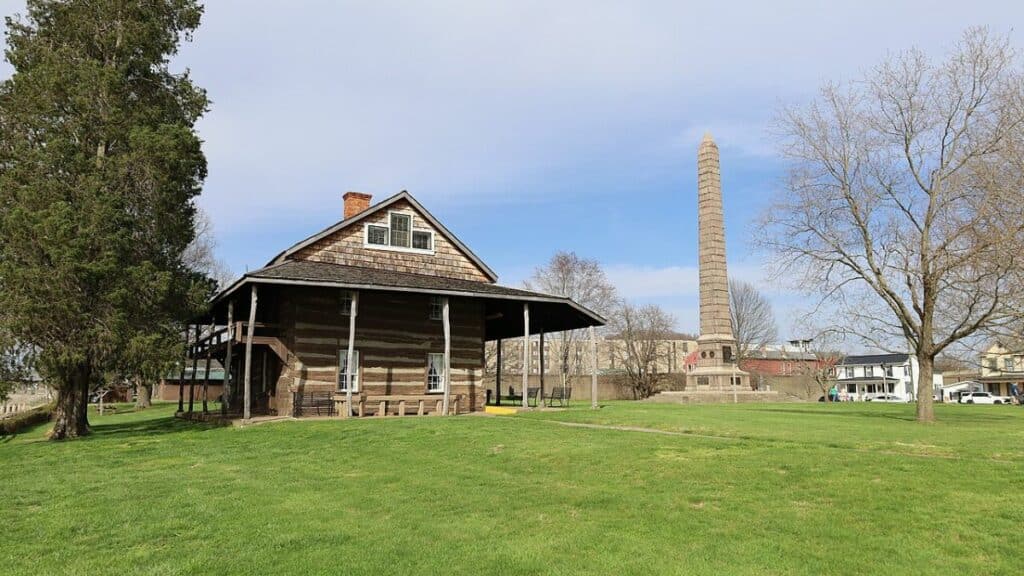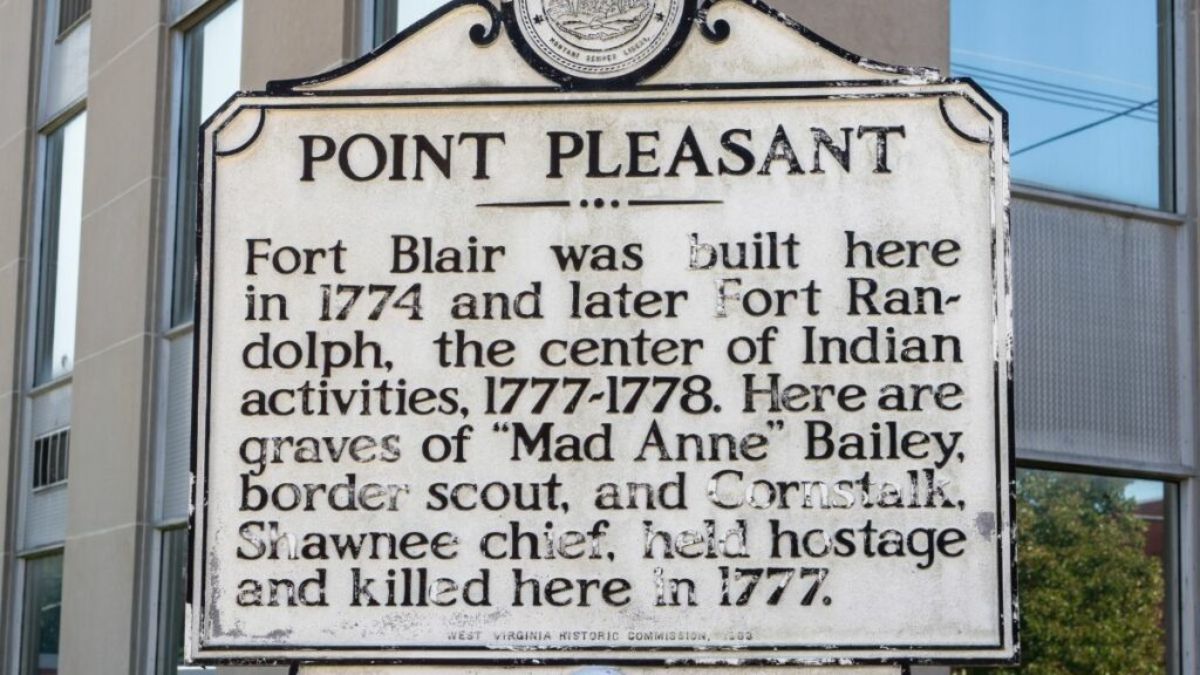Fort Blair, located in West Virginia, is a historical gem deeply rooted in American history. Established in the mid-1700s near Point Pleasant, this fort served as a crucial defense post during numerous conflicts.
Its strategic position along the Ohio River made it a key player in the defense of Western Virginia, particularly during Lord Dunmore’s War and the American Revolutionary War.
Today, Fort Blair is a significant landmark, drawing history enthusiasts and tourists alike to explore its rich past and cultural impact through various memorials, parks, and educational initiatives.
Discover the intriguing stories and strategic importance that define Fort Blair’s legacy.
History of Fort Blair
Fort Blair, located in West Virginia, plays a significant role in American history. From its inception in the 18th century to its participation in pivotal conflicts, it is a crucial landmark in the area.
Establishment and Early History
Fort Blair was established in the mid-1700s as a strategic defense post near modern-day Point Pleasant. It served as a refuge for settlers against Native American raids.
Early settlers constructed palisades and blockhouses, making them a robust protective structure.
The Virginia colonial government supported the fort’s construction for frontier defense. Its establishment marked a significant step in securing the region.
The fort’s presence deterred potential threats and fostered settlement growth along the Ohio River.
Siege of 1774
The Siege of 1774 was a prominent event in the region’s history. During Lord Dunmore’s War, tensions between the Shawnee tribe and Virginian settlers escalated.
Chief Cornstalk, a key Shawnee leader, opposed the settlers’ encroachment.
In October 1774, Shawnee forces launched an attack on Fort Blair. The defenders repel the siege, showcasing the fort’s defensive capabilities.
This conflict culminated in the Battle of Point Pleasant, considered one of the early conflicts leading to the American Revolution.
Role in the Revolutionary War
Fort Blair played a notable role during the American Revolutionary War. It was a frontier defense post that assisted the colonies against British forces and their Native American allies.
During the Revolutionary War, the fort protected settlers and maintained a supply line.
Its strategic position allowed for effective coordination and defense against British and Native American attacks.
The fort’s contributions were indispensable in securing the Western Virginia frontier, ensuring stability, and aiding the war effort.
Explore More: 11 Historic Forts in West Virginia: An Amazing Historical Insight
Strategic Importance
Fort Blair in West Virginia is key due to its strategic location and historical military significance. This section highlights its geographical advantages and critical role during military campaigns.
Location and Geography
Fort Blair is situated in Mason County, near the confluence of the Ohio and Kanawha Rivers. This location provided both logistical advantages and natural defenses.
The waterways enabled easy transportation of troops and supplies.
Its proximity to the Ohio River allowed access to major trade routes. This was crucial during the American Revolution as it facilitated supply lines.
The surrounding terrain offered natural barriers that enhanced the fort’s defensive capabilities.
The fertile lands around Mason County added to the strategic value. It enabled local provisioning and sustenance for stationed troops.
These geographical factors made Fort Blair a focal point in regional military planning.
Military Significance
During the American Revolution, Fort Blair played a pivotal role in the defense strategies orchestrated by the Continental Congress.
It served as a critical outpost, bolstering the defense of Western Virginia against British forces.
The fort’s presence deterred enemy advances along the Ohio River. It also served as a rallying point for local militia and Continental Army units.
This helped safeguard critical supply routes essential for sustaining the war effort.
Fort Blair’s design and construction reflected the military engineering practices of the period. It included fortified structures and stockades, ensuring robust defense mechanisms.
The military significance of Fort Blair extended well into the post-revolutionary period, maintaining regional stability.
Notable Individuals
Fort Blair, West Virginia, has a rich history marked by its association with notable leaders and key figures, particularly during conflict and treaty negotiations.
These individuals significantly shaped their time’s military strategies and Indigenous leadership.
Leaders and Commanders
Captain Mathew Arbuckle was a central military figure during the conflicts at Fort Blair. Known for his decisive actions and leadership qualities, he was instrumental in many key operations.
Colonel William Crawford also held a prominent role. His experience and tactical acumen were invaluable, particularly during missions that required strategic expertise.
Andrew Lewis, another significant commander, was well-regarded for his military strategy and leadership and contributed extensively to the fort’s defense and operational success.
Although more politically visible, Peyton Randolph contributed to the broader strategic context impacting Fort Blair. His influence as a statesman helped shape the policies that guided military actions and treaty negotiations.
Shawnee Leadership

Chief Cornstalk, a prominent Shawnee leader, played an essential role in the interactions between Indigenous tribes and the fort. His strategic negotiation prowess and battles earned him respect from allies and adversaries.
Another key figure, the Shawnee Chief, represented the determination and resistance of the Shawnee people during conflicts. His leadership was pivotal in many confrontations and treaty discussions involving Fort Blair.
These Shawnee leaders were crucial in maintaining the strength and unity of their people during trying times, often occupying the forefront of significant historical events.
Their leadership helped to shape the interactions between Indigenous communities and colonial forces.
Cultural and Political Impact
Fort Blair has left a significant mark on cultural and political landscapes. Relations with Native Americans and post-war developments provide insight into its complex history.
Relations with Native Americans
Fort Blair’s interactions with the Shawnee and other Native American tribes were pivotal. Tensions arose as settlers moved into the area.
Hostilities often escalated, leading to conflicts known as Border Warfare. Having a strong presence in the region, the Shawnee resisted encroachments on their lands.
Efforts to negotiate peace were made but met with limited success. The Continental Congress attempted various treaties to mitigate violence.
Despite challenges, these interactions shaped the cultural dynamics between settlers and Native tribes, influencing both communities’ development.
Post-War Developments
Post-American Revolution, Fort Blair underwent significant changes. The end of British rule saw the Governor of Virginia taking control, replacing the Royal Governor of Virginia.
This transition affected political governance and land policies.
The fort’s strategic location made it a focal point during the restructuring of territories.
Policies were implemented to integrate the region into the broader framework of West Virginia History. Economic activities increased, settlers established permanent communities, transforming the area into a thriving settlement.
Fort Blair Today
Fort Blair today plays a significant role through its memorials and parks, as well as its educational significance rooted in West Virginia’s history and the history of Native Americans.
Memorials and Parks

Fort Blair offers several notable parks and memorials that honor its historical significance. Tu-Endie-Wei Park marks the site of the Battle of Point Pleasant, providing visitors with lush landscapes and deeply rooted historical markers.
Krodel Park, a family-friendly location with recreational facilities, connects the fort’s history with community events and gatherings.
These parks provide opportunities for both relaxation and education, supported by well-maintained grounds and engaging activities.
Fort Blair’s memorials pay homage to Native Americans and the early settlers, blending historical reverence with public accessibility. The parks are spaces where history and leisure intertwine.
Educational Significance
Fort Blair is an educational hub with narratives from West Virginia’s formative periods.
School groups and history enthusiasts frequently visit to learn about the fort’s strategic importance and its impact on regional development.
It’s a site where the interaction between Native Americans and European settlers is thoughtfully presented, offering a balanced historical perspective.
Exhibits and guided tours enhance the educational experience.
The connection to West Virginia history provides context for understanding broader American history, making Fort Blair a valuable resource for historical education.
The site’s comprehensive approach ensures visitors leave with a deeper knowledge of the area’s past.
Archaeological and Preservation Efforts
Efforts to uncover and preserve Fort Blair have made significant strides, shedding light on historical artifacts and actions aimed at maintaining its heritage. These works provide valuable insights into Fort Blair’s past.
Excavations and Discoveries
Archaeological excavations at Fort Blair have unearthed numerous artifacts. Researchers found weapons, tools, and everyday objects used by militiamen stationed at the fort.
These artifacts offer a glimpse into the life and defense strategies of the time.
Notably, items linked to Shawnee Chief Cornstalk have been discovered, connecting the site to important historical figures.
These findings are preserved for study and public display, facilitating a deeper appreciation of Fort Blair’s historical significance.
Conservation Initiatives
Several initiatives aim to preserve Fort Blair and its artifacts. Preservationists work tirelessly to stabilize the site’s structures and prevent further decay.
Funding from local and state programs supports these efforts, ensuring the fort remains accessible for future generations.
Community involvement plays a big role, with local volunteers and historians contributing to conservation projects.
Educational programs are also implemented to raise public awareness about preserving this historic West Virginia heritage landmark.

Cory is a website owner and content creator who enjoys fishing, history, coin collecting, and sports, among other hobbies. He is a husband and father of four.
Romans 15:4 For whatever was written in former days was written for our instruction, that through endurance and through the encouragement of the Scriptures we might have hope.

